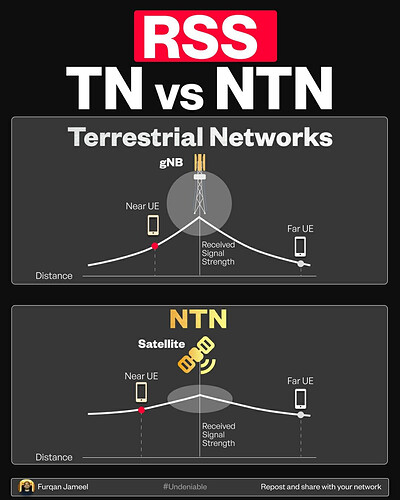In TN, the signal fades with distance.
In NTN, it disappears without warning.
Satellite signals remain steady—until they don’t.
When a beam shifts, signal drops off like a cliff, not a slope.
Let’s talk Received Signal Strength (RSS) in
Terrestrial Networks (TN) vs Non-Terrestrial Networks (NTN).
In terrestrial networks, distance matters a lot.
![]() The closer your device is to the tower (gNB),
The closer your device is to the tower (gNB),
the stronger the signal.
![]() Move farther away, and the signal fades fast.
Move farther away, and the signal fades fast.
That’s simple. That’s expected.
But then comes NTN—non-terrestrial networks.
Here, satellites beam signals from far above.
And guess what? The rules change.
![]() Signal strength stays more evenly distributed
Signal strength stays more evenly distributed
![]() Whether near or far, devices get similar coverage
Whether near or far, devices get similar coverage
Why?
Because from that high up, everything’s far.
So distance loses its grip on signal strength.
It’s not better or worse—just different.
Each network has its strengths.
And different use cases.
The key?
Not choosing sides.
But knowing when and where each is used.
Thanks for reading.
LinkedIn: ![]()
